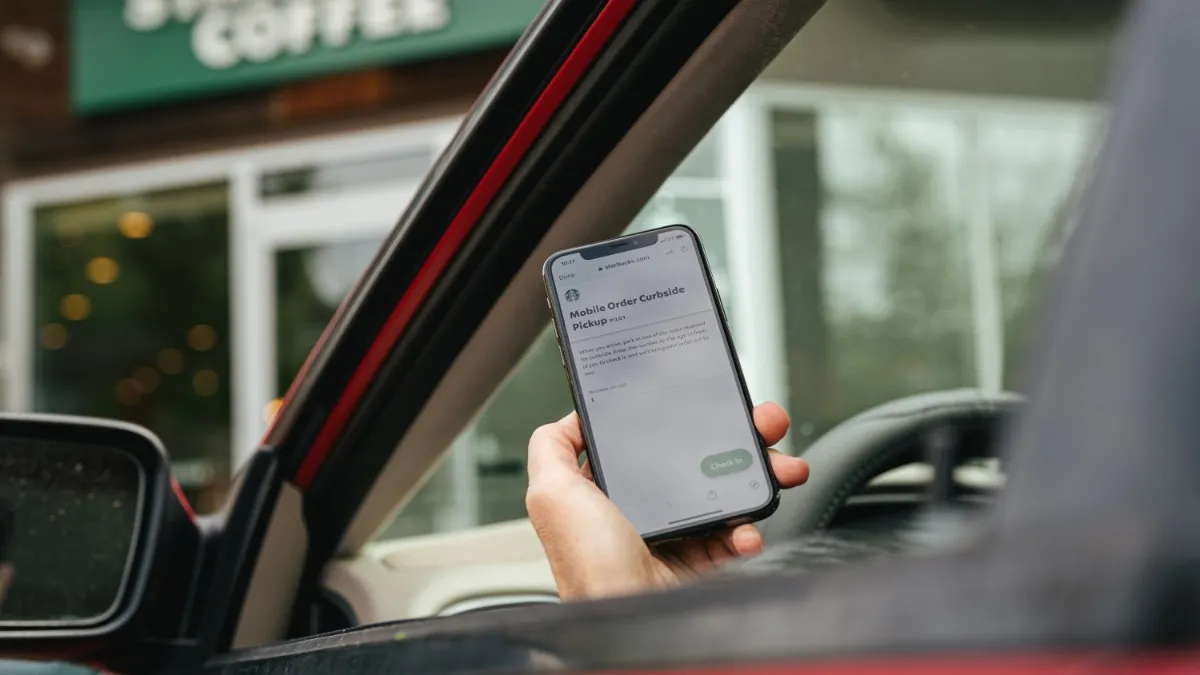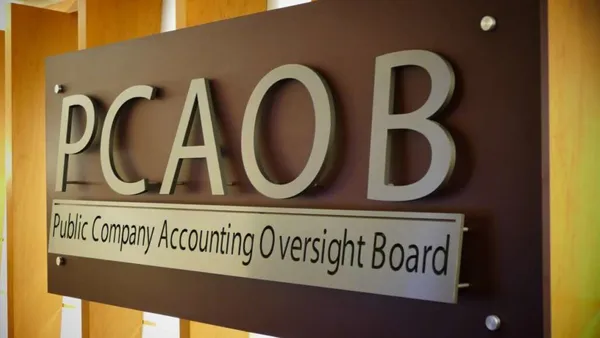Dive Brief:
- Starbucks has added curbside pickup to 800 U.S. stores, with plans to more than double that number to about 2,000 in the next couple of months, CFO Pat Grismer said this week during the JPMorgan Gaming, Lodging, Restaurant and Leisure Conference. The company is also testing and planning to deploy handheld point-of-sales at the drive-thru to improve wait times, Grismer said.
- With more people working from home, demand at the drive-thru, especially in the suburbs, has increased and resulted in longer lines. Both of these efforts are expected to reduce wait line rejection, Grismer said. Confronted with a long drive-thru line, customers can still place an order through the mobile app and pull into a curbside parking spot, which also takes pressure off the drive-thru.
- With Starbucks not expected to recover from sales declines for another six months in the U.S., the company is prioritizing its off-premise channels, especially those offering contactless experiences. About 3% of its company-owned restaurants are also closed, mostly in central business districts and large metropolitan areas, Grismer said.
Dive Insight:
Starbucks locations in urban areas continue to comp negatively, while Starbucks' locations with drive-thrus —which make up about 57% of its U.S. stores — are comping positively, Grismer said.
And while the chain plans to close 400 stores within the next 16 months, it still has a robust new store development program focused on drive-thrus, especially in suburbs, where much of the traffic has moved with fewer people going to offices, Grismer said. But that has created another issue, especially with the ability for customers to customize their orders.
"Given the complexity of the builds, the wait times in the drive-thru line can be long," Grismer said. Collecting orders sooner would allow staff to start the production of its drinks sooner and get them out faster, he said.
The company is also receiving favorable rent terms and lease terms for these suburban leases, such as securing additional parking spots, which will help the company add more curbside pickup and re-capture any customers who may have originally driven away if the line was too long.
About half of its stores also have at least limited seating open, many of which include stores with drive-thrus, allowing customers who don't want to wait in the drive-thru to come inside and order their drinks instead, Grismer said.
Starbucks also is boosting retention through new payment options with its Starbucks Rewards program, which rolled out this week. Customers scan the Starbucks app and then pay with cash, credit/debit or select mobile wallets and earn Stars, which can be redeemed for beverages or food items, according to a press release.
Customers can earn two Stars for every dollar on a preloaded Starbucks card and earn one star for all other payments. Previously, customers would have to prepay on a store card. These updates are expected to boost rewards membership. Loyalty customers tend to order more often and spend more, a combination Starbucks needs to recover declining sales.
















